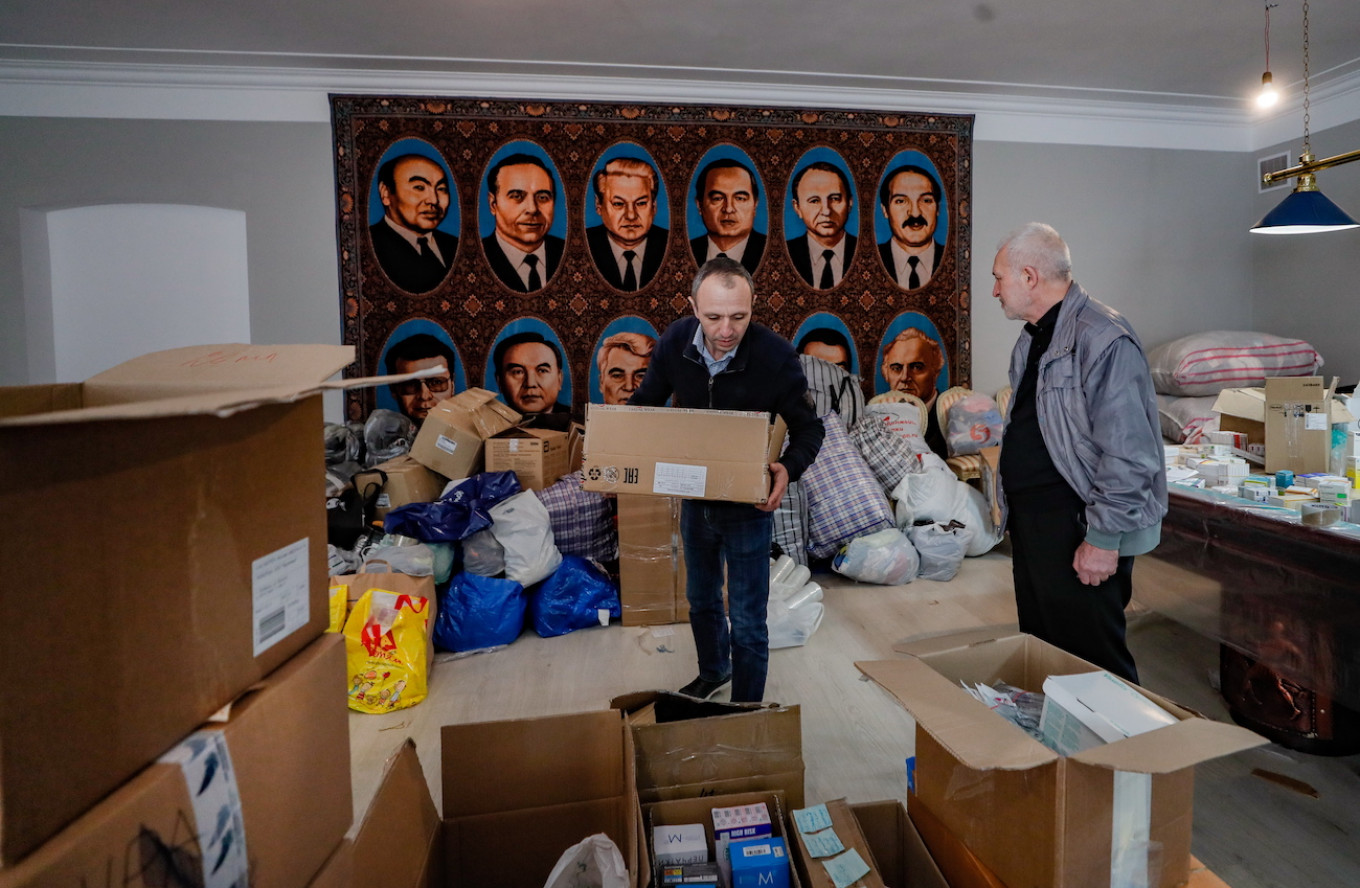
A large group of men gathered in front of the Armenian Embassy in central Moscow on Tuesday morning — some dressed in expensive suits, others in track pants — waiting to meet the ambassador. They were members of the Armenian diaspora in Moscow eager to find out how they could help their country in the fighting raging over the disputed Nagorno-Karabakh region.
Tigran, a 28-year-old taxi driver who has lived his whole life in Moscow and has only visited Armenia once, said he hoped to get more information on how he could join in the clashes, as he felt his “nation needed him.”
“I want to join the final battle for our homeland,” he said, declining to give his surname.
Others, like Aram Nikosian, a 45-year-old businessman, said they had come to coordinate the delivery of financial assistance to Armenia.
Since Sept. 27, Armenian and Azerbaijani forces have been engaged in conflict over Nagorno-Karabakh, a mountainous, majority ethnic Armenian region that broke away from Azerbaijan during the collapse of the Soviet Union. The current fighting is the worst seen since a 1994 ceasefire, and the two former Soviet republics have been blaming each other for the escalating violence.
Over the weekend, Armenia shelled Azerbaijan’s second-largest city, Ganja, after Azerbaijani forces shelled Nagorno-Karabakh’s capital, Stepanakert. More than 220 people have been confirmed dead, but there are fears the actual toll on both sides could be higher.
The Union of Armenians in Russia said last week that it had compiled a list of 20,000 volunteers willing to join the fighting over Nagorno-Karabakh. Some of those who have already traveled to the region, however, told The Moscow Times that they were turned away from the battlefield.
“I was in Stepanakert a few days ago, they wrote my name down but said I was not yet needed. At the moment they are only accepting fighters with experience,” said Levan, a student from Moscow who went to Nagorno-Karabakh with three friends, but is now in the Armenian capital Yerevan.
In Armenia and Azerbaijan, officials announced general mobilizations the day fighting broke out. Since then, Armenian media have reported that more than 7,000 carloads of volunteers have arrived at the frontlines in Nagorno-Karabakh. The reports said many have been turned away due to lack of combat experience.
Not all Armenians leaving Russia to join the cause are heading to Nagorno-Karabakh to fight.
Elina, a 29-year-old doctor, quit her job in a Moscow hospital to fly to the disputed region last week. She said she has been treating patients “non-stop.”
Calm in Moscow
While fighting has intensified in Nagorno-Karabakh, Russia has so far not experienced clashes like those that erupted between the Azerbaijani and Armenian diasporas in July, when a short flare-up of violence in Nagorno-Karabakh led to brawls and destruction of property in Moscow.
Back then, it took strong police intervention and intervention by Armenian and Azerbaijani community heads to calm the fighting between the diasporas. In a rare instance of unity, prominent Armenian entrepreneur Sergey Sarkisov and his Azerbaijani counterpart God Nisanov said they would pay to replace food stalls destroyed in the skirmishes.
This time round, members of both diasporas in Moscow told The Moscow Times that the police are closely monitoring the situation, making fresh violence less likely.
“We don’t want to fight here with them anymore. We want to protect our land,” said Tigran.
